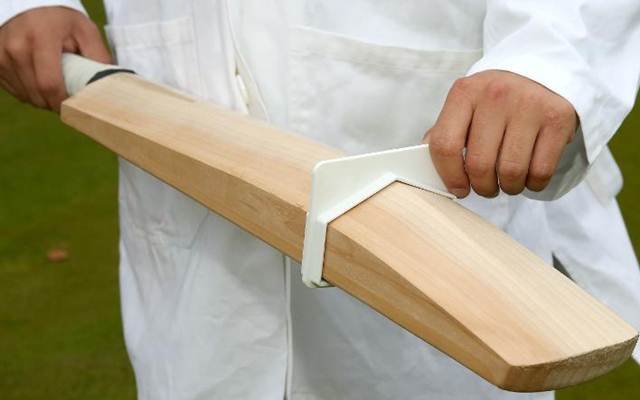Highlights of the new ICC rules
A player can now be sent off the field by the umpire for the rest of a match for serious misconduct.
3 Min Read


The significant changes include restriction on dimensions of the bat. (Photo Source: ICC)
In order to help the game keep up with changing times and keep a check on the increasing advantage for the batsmen and the fielding side, and promote fair play, the International Cricket Council (ICC) released a new set of playing conditions that will govern cricket.
The following are the changes to the ICC’s playing conditions that will come into effect for all international series beginning from September 28, 2017.
- A player can now be sent off the field by the umpire for the rest of a match for serious misconduct. This new rule is perhaps, the most talked about rule among cricket fans, after its announcement. This will apply to most Level 4 offences, with Level 1-3 offences continuing to be dealt with under the ICC Code of Conduct. Level four offences as per the ICC are:
1. Threat of assault on an umpire or referee.
2. Physical assault of another player, umpire, referee, official or spectator.
3. Any act of violence during play.
4. Using language or gestures that seriously offends race, religion, colour, descent or national or ethnic origin.
- An appeal can be withdrawn, or the umpires can recall a dismissed batsman, at any time before the ball comes into play for the next delivery. Previously, a batsman could not be recalled once he/she had left the field.
- A batsman can be caught, run-out, or stumped even if the ball makes contact with a helmet worn by the fielder or wicketkeeper. This change now helps the wicketkeepers now wear helmets for safety reasons, though now making ‘clean catches’ not a pre-requisite.
- If an umpire’s decision is referred to the TV umpire by a team, and the on-field decision remains unchanged because the Decision Review System (DRS) shows “umpire’s call”, the team will not lose the review. This is a welcome move because it will make teams confident of the DRS as they will not lose a review for “umpire’s call.” They will not have their two unsuccessful reviews replenished after the first 80 overs of the innings in a Test. They will have only two unsuccessful reviews for the entire innings. The DRS will now be used in T20 internationals as well – teams will have one unsuccessful review per innings.
- If a batsman grounds his/her bat or part of his/her body behind the crease while regaining his/her ground before the stumps are broken, and then if he/she inadvertently loses contact with the bat, or if the grounded part of his/her body becomes airborne – while running or diving – when the stumps are broken, he/she shall not be run out or stumped.
- The permitted size of the bat is now defined, with the width and length unchanged, but with added restrictions on the thickness of the edges (40mm) and the overall depth (67mm). Umpires will be issued with a new bat gauge, which they can use to check a bat’s legality. This aims to bring in balance to the bowlers who have to bear the brunt because batsmen like David Warner and Chris Gayle use bats with super thick edges.
- In order to do cement some rules to get rid of unfair play, several changes have been made. For example, if the fielding side deliberately tries to distract batsmen with mock fielding, after having caught the ball, they will be penalized. Or, if a bowler bowls a deliberate no-ball, as Kieron Pollard allegedly did in the CPL final, he/she will be removed from the attack for the rest of the innings.
Download Our App
For a better experience: Download the CricTracker app from the IOS and Google Play Store